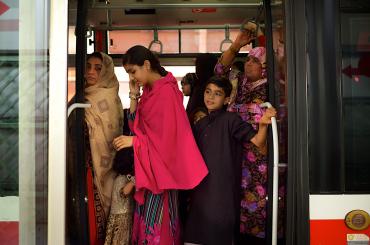
female labour force participation
-
Female Labour Force Participation
-

US tariffs on Bangladesh threaten decades of economic and social progress
The US has imposed a 37% tariff on Bangladeshi garment exports, a sector that employs more than 4 million people. Rigorous evidence shows that export-led manufacturing in Bangladesh has boosted female labour force participation, increased girls education and delayed marriage. This trade shock could reverse decades of economic and welfare gains for Bangladeshi women and girls.
-

How safe transport could unlock women’s labour force participation in Pakistan
A lack of safe transportation prevents women in urban Pakistan from entering the labour market. A programme providing subsidised, women-only transport was able to tap into a large pool of female workers, improving mobility and economic empowerment.
-

Guaranteed employment in India actually reduced female labour force participation
A governmental employment-guarantee programme designed to provide economic security to rural households in India has unintentionally reduced women’s labour force participation—deepening gender disparities within households. By guaranteeing employment...
-

How agricultural innovation affected female labour force participation in Brazil
New technologies in Brazil increased agricultural productivity, but also reduced economic opportunities for women and increased fertility rates.
-

Why women in Africa’s services industry must outperform men to overcome customer bias
Workplace discrimination by customers directly, and negatively, impacts women’s outcomes in the service industry in sub-Saharan Africa.
-

Boosting women’s labour force participation: Opportunities and challenges in Bangladesh
What are the barriers to women’s labour force participation in Bangladesh? What are some promising evidence-based policy options? Where is more evidence required?
-

Free trade agreements and women’s employment: Evidence from Chile
New export opportunities led to a rise in hiring of female white-collar workers through changes in the use of technology and a correction of discrimination amongst Chilean firms.
-

Can flexible work opportunities for women bypass gender norms?
Flexible work arrangements can both attract women to the labour force and provide a gateway to outside-the-home jobs. In India, where gender norms keep women out of the labour force, home-based jobs may represent the most immediate path to increase women’s labour force participation.
